Last week gates, this week doors and doorways.
I shall start with few modest examples and then move on to the more spectacular.
The facade St Martin’s House at 1 Gresham Street is a delight (EC4V 7BX) …
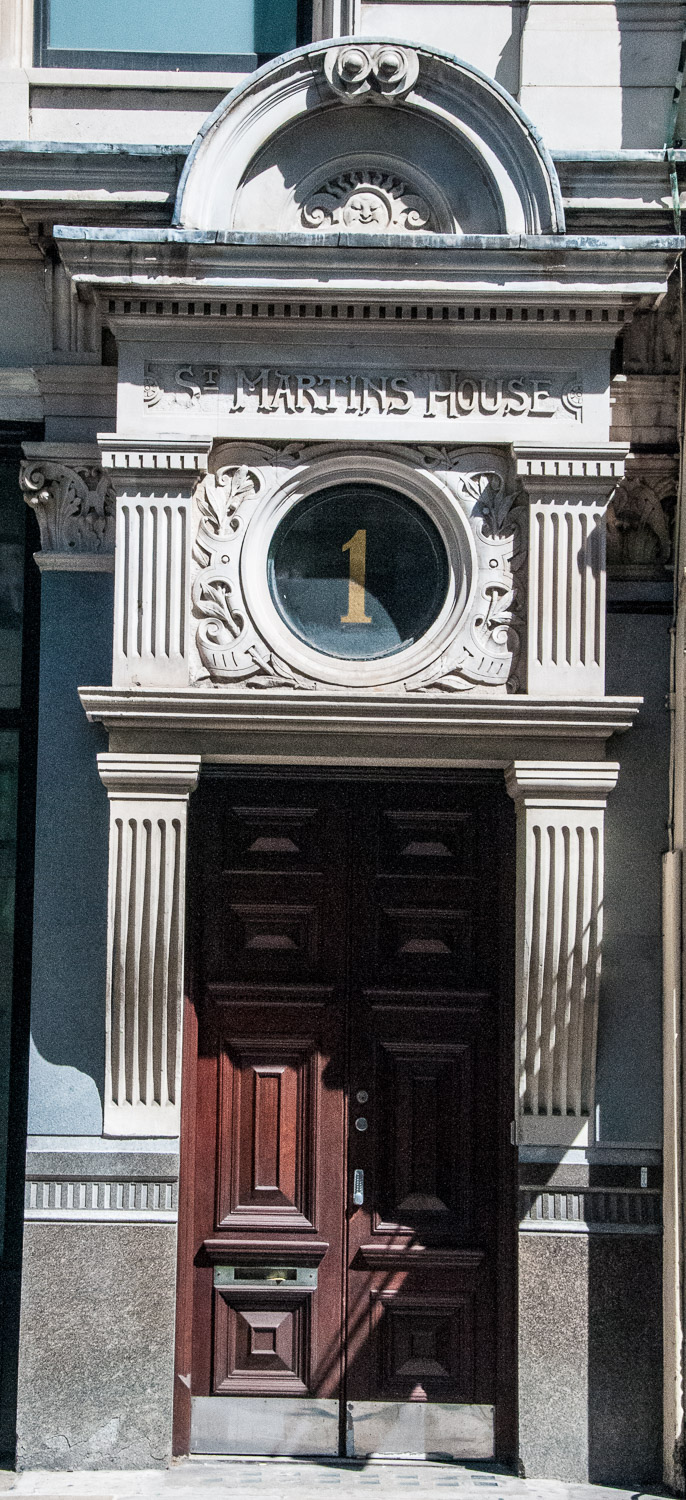
Dating from 1891 it incorporates a wonderfully happy, smiling Mr Sun …
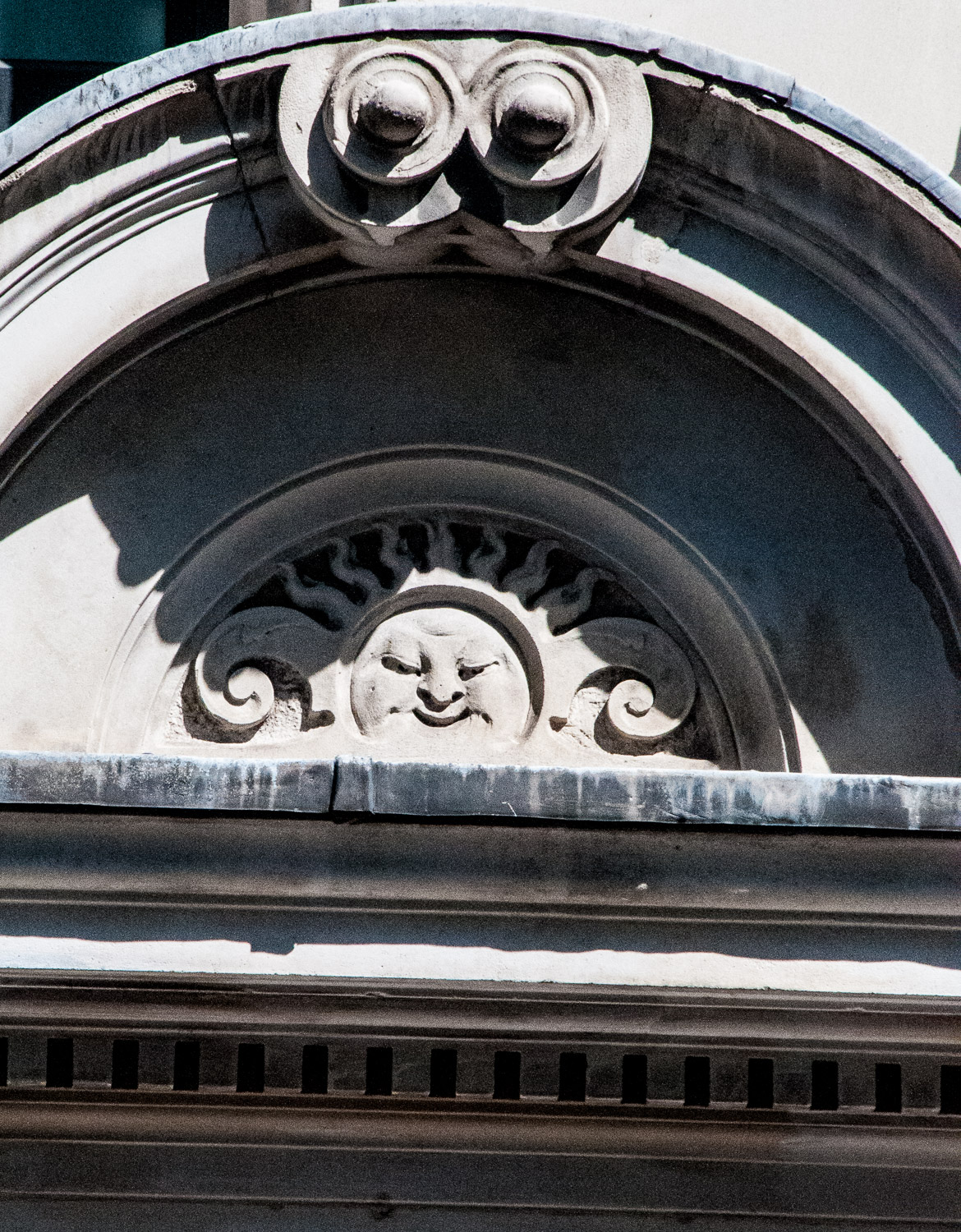
What also makes it charming is the rogue apostrophe ….
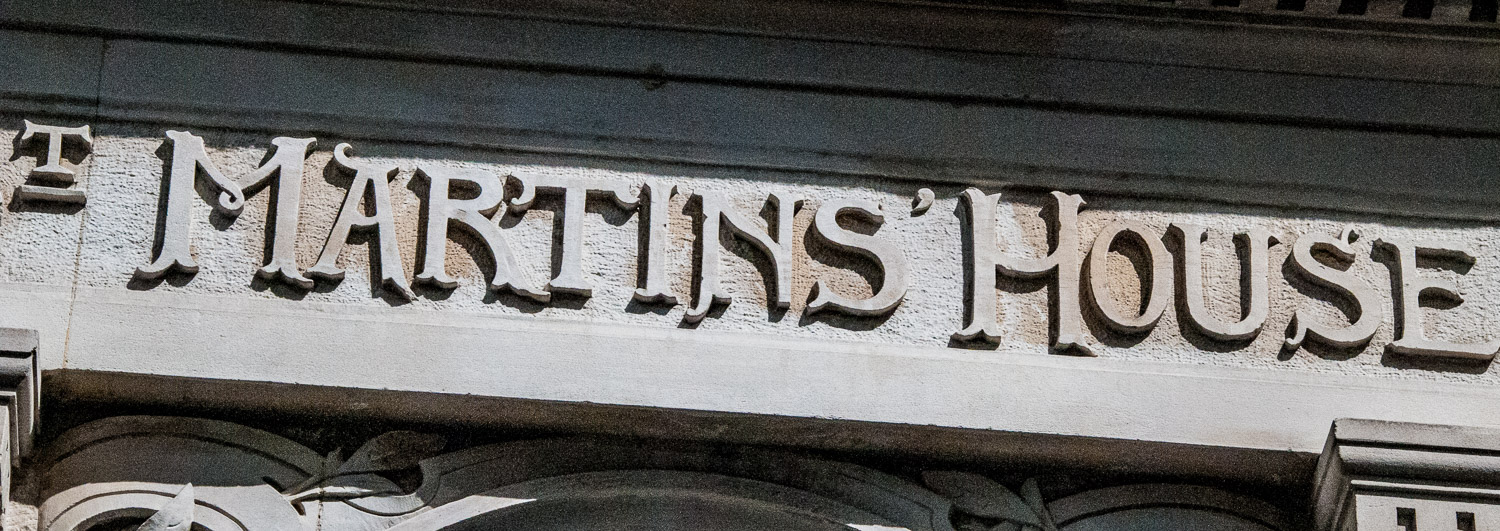
Surely it should read St Martin’s House?
St Bartholomew house at 90-94 Fleet Street is an Arts and Crafts block built in 1900 (EC4y 1DH) and it looks like that door may well be the original …
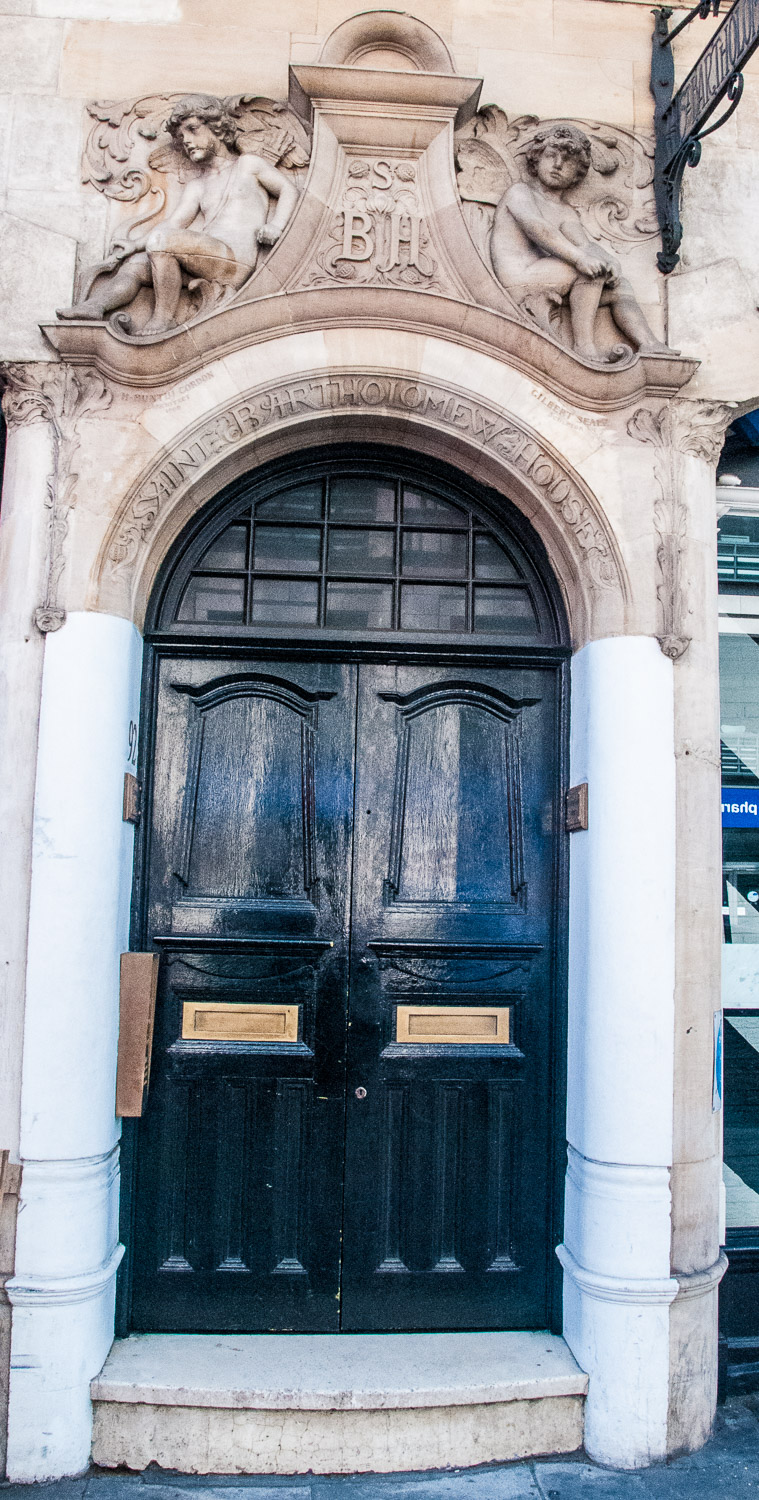
Regarding the putti (cherubs), the blogger Chris Partridge of Ornamental Passions writes …
The one on the left is more or less a standard model putto with feathery wings and a bow, carrying a quiver, but the one on the right is decidedly odd with what look like butterfly wings and flowers in its hair. Is it a boy or a girl?
Unusually, the piece is signed by both the architect and the sculptor …

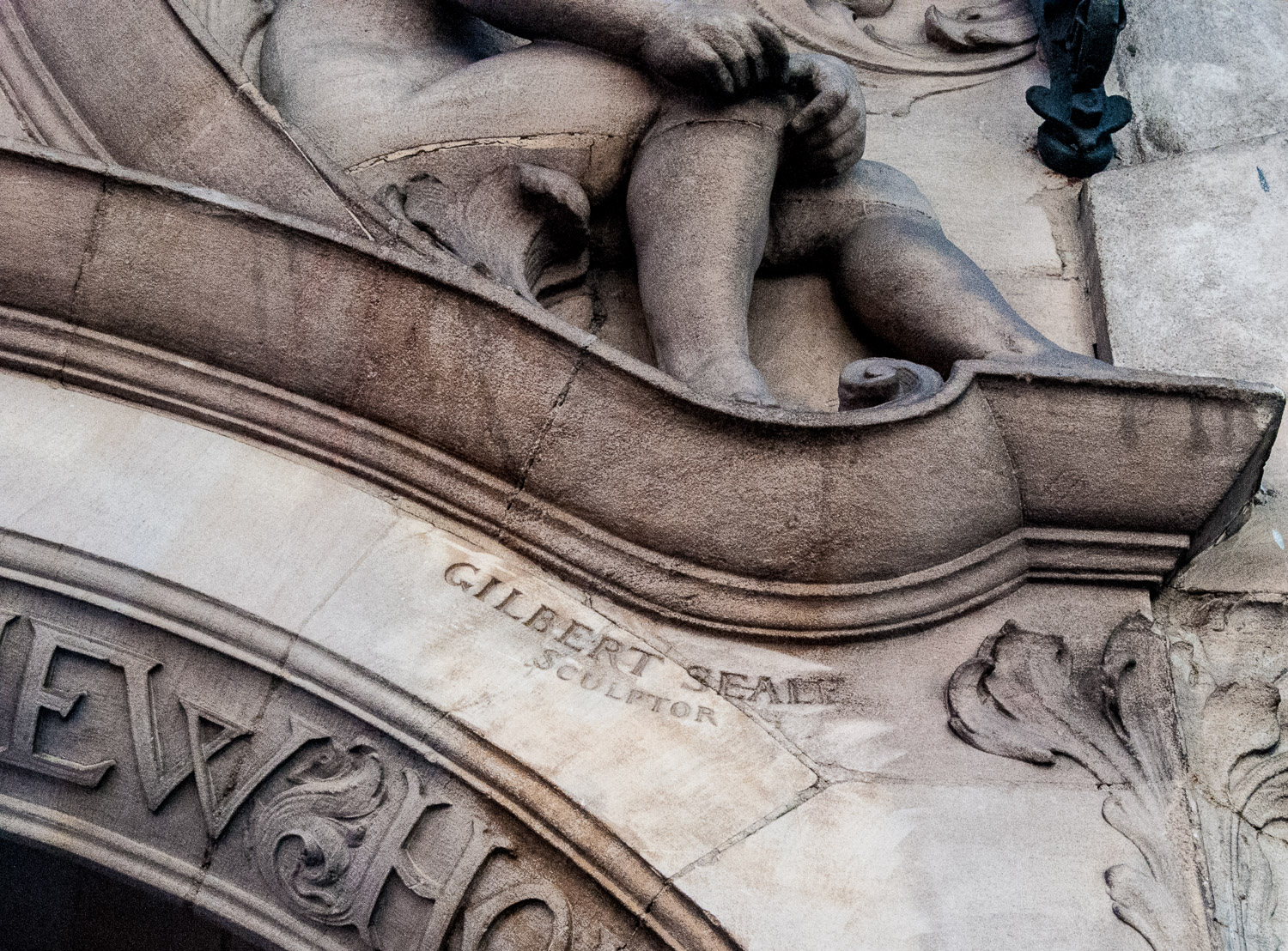
Cherubs are everywhere in the City and you can find the location of many of them in my earlier blog Charming Cherubs.
And now to the more spectacular, the main entrance to the Bank of England on Threadnedle Street ((EC2R 8AH) …
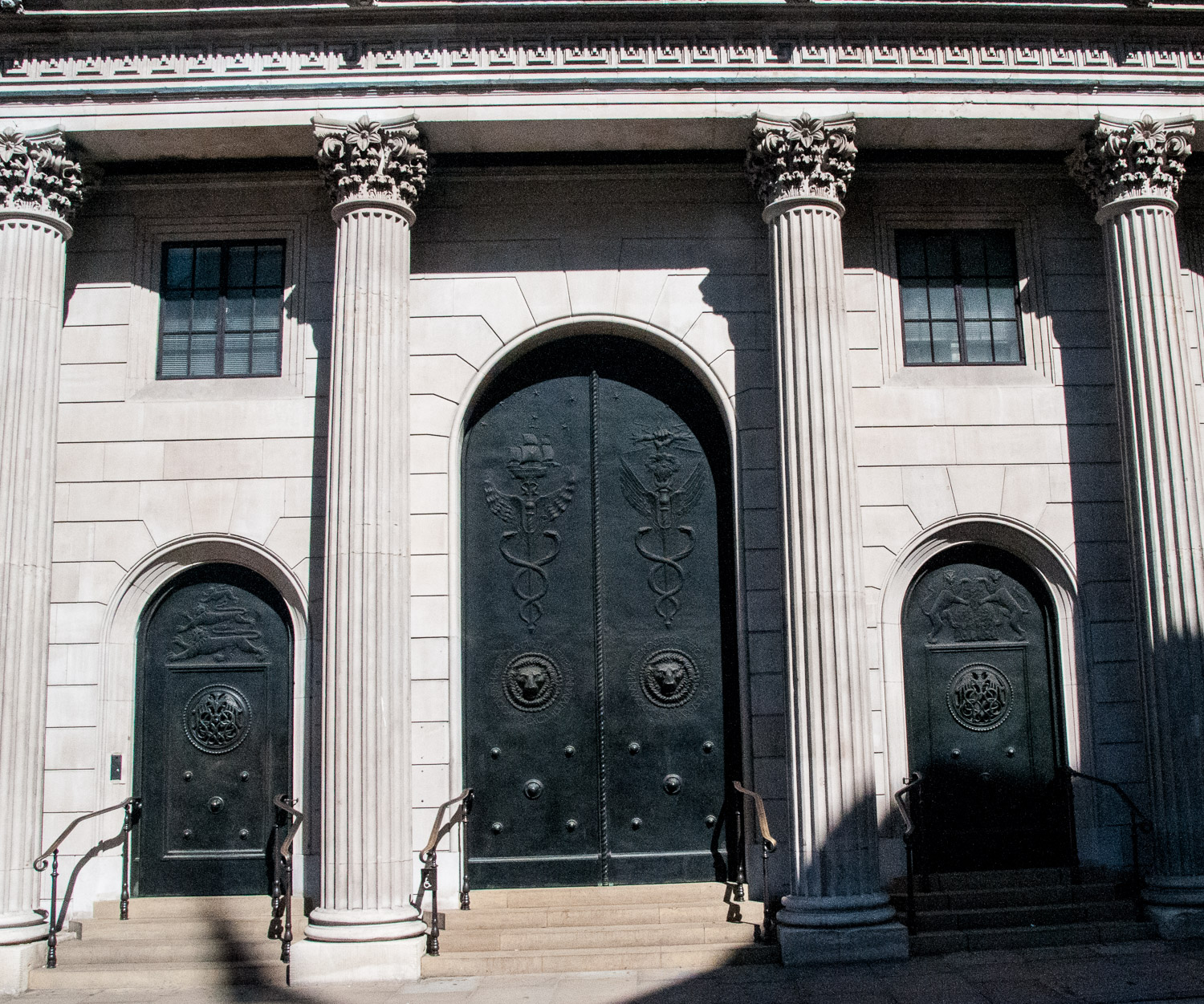
A closer view of the two main doors. Made of bronze, they were designed between 1928 and 1931 …
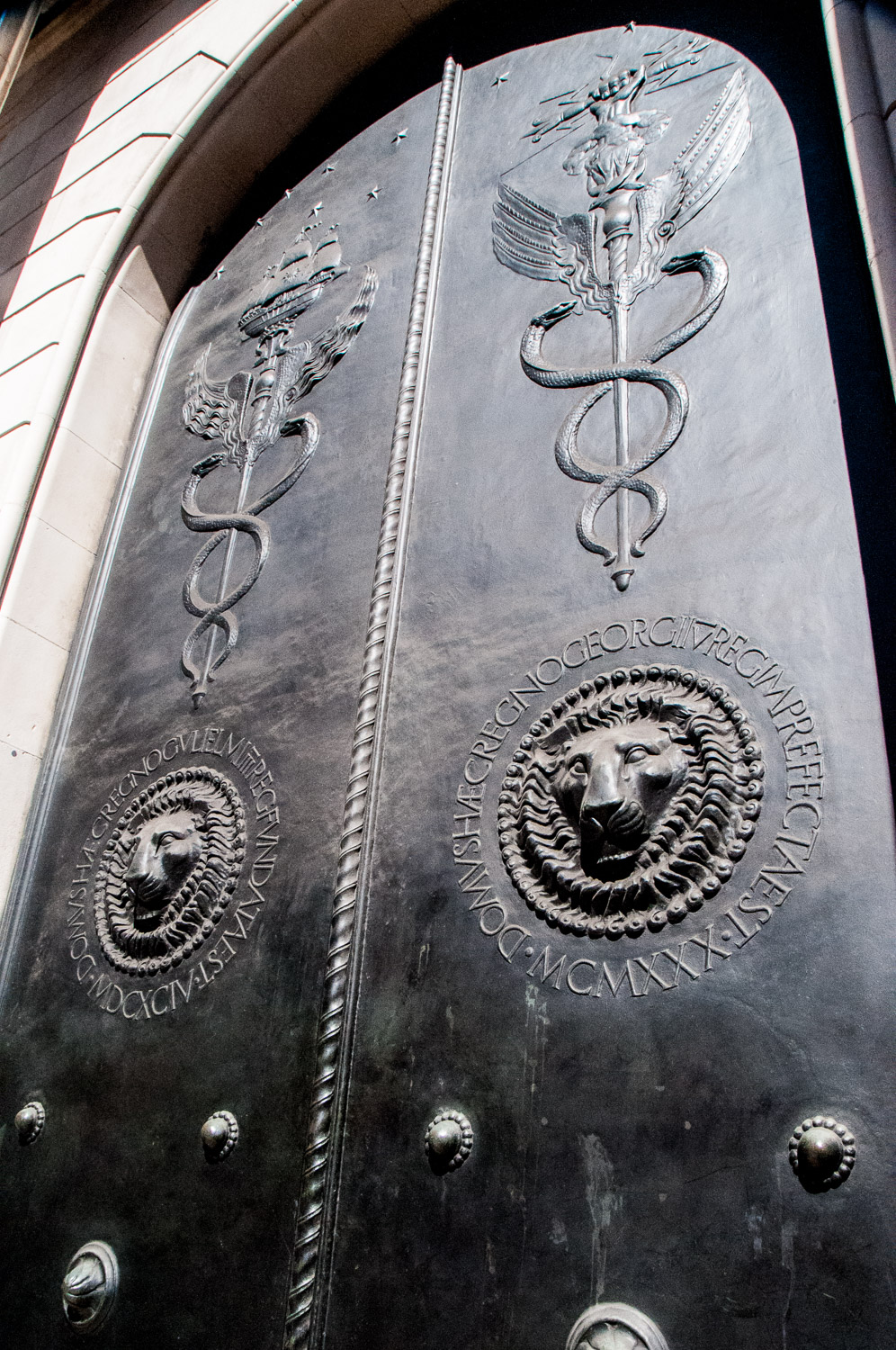
The caduceus (winged staff) on the left is surmounted by a sailing ship from the days of the Bank’s foundation.The one on the right has the hand of Zeus grasping the lightning which symbolises electrical force. Above these are the constellations of Ursa Major and the Southern Cross, which stand for both sides of the world, and imply the world-wide extent of the Bank’s operations. The lions symbolise protection and strength.
The door on the left has three lions in bas-relief representing the royal arms …
The round opening also has a caduceus and a pattern of interlocking serpents forming its grille.
This is the right hand door …
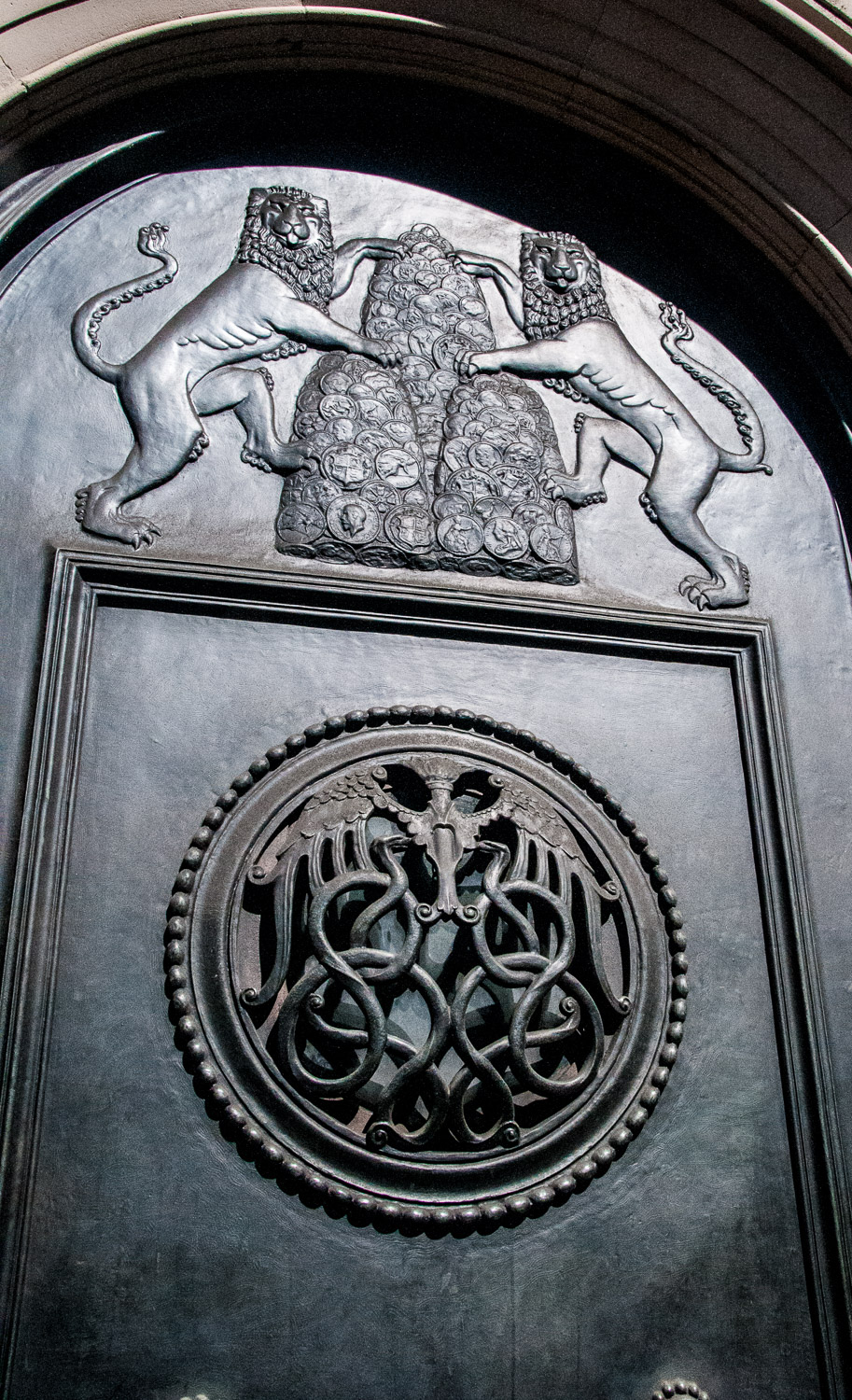
You can see the caduceus and interlocking serpents more clearly here, and above two lions guard a mound of gold coins …
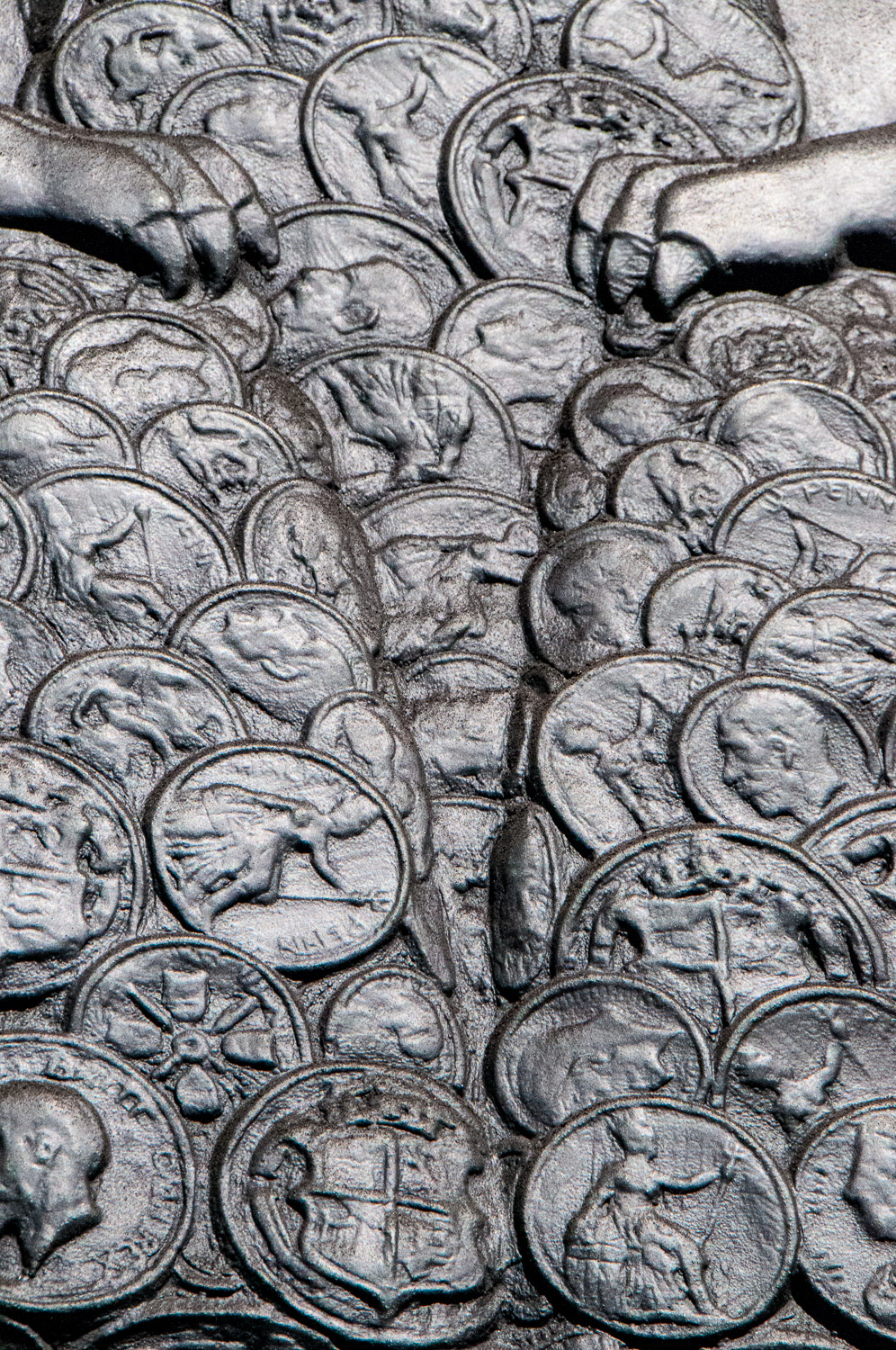
What a hoard!
I will be looking again at the Bank of England in a future blog (there are more doors to examine) and also the Royal Exchange across the road.
